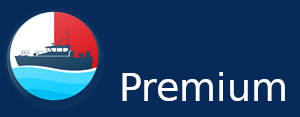Captain Martin Lim, a maritime pilot based in Malaysia’s Port Klang terminal, talks to Maritime Fairtrade correspondent Rachael Philip about the fulfilling and exciting life of a maritime pilot.
One can say for certain that the job of a maritime pilot is not without its swells and waves. According to Captain Martin Lim, a maritime pilot based at Malaysia’s Port Klang terminal, the variables – weather conditions and size of vessels – make no two days alike.
A maritime pilot, also known as harbor pilot, is a mariner who maneuvers ships through dangerous or congested waters, such as harbors or river mouths. Maritime pilots are regarded as skilled professionals in navigation as they are required to know immense details of waterways such as depth, currents and hazards, as well as displaying expertise in handling ships of all types and size.
Captain Martin remembers his first day on the job, after completing his training, when he accompanied his senior on a pilot boat to the offshore pilot station, and later embarked a large moving vessel climbing up the pilot ladder.
“That was the day I had an idea of who I really was, and of my readiness level for the job,” he said.
Although climbing the pilot ladder is routine procedure for a maritime pilot embarking a ship, the pilot transfer arrangement can be a risky procedure due to factors such as the weather and sea conditions.
Captain Martin said the pilot can call off the embarkation if there is extreme bad weather or if he notices that the pilot ladder is not properly maintained or rigged in compliance with international standards set by the IMO SOLAS convention and IMPA.
Early days and training
Captain Martin started his career as a sea captain more than 30 years ago after clinching a Malaysia International Shipping Corporation (MISC) scholarship in 1987 just after leaving secondary school. He underwent rigorous training before starting out as a cadet on board a ship.“I sailed for 12 years. It was a very demanding job, where you are away from home for months on end. I decided to try for the more grounded position of a maritime pilot.
“To qualify, I had to go through another round of training before starting out as a cadet trainee pilot, learning and getting a feel of pilotage from observing senior pilots. After one year on the job, I received the Stage 1 license allowing me to navigate vessels of up to 110 meters long.”
There are four stages and a pilot will spend at least 18 months in each stage training and sitting for exams before moving on to the next stage. At Stage 4, pilots can navigate vessels of up to 280 meters in length. Today, Captain Martin holds the Unrestricted Pilot License. He is qualified to pilot ships of any size and length with no limitation to gross tonnage.
All in a day’s work
At Port Klang, the pilotage service is provided 24 hours a day by the terminal operator. Pilots here work in 12-hour shifts comprising two day shifts and two night shifts with a rest day in between. Each work day may see a pilot navigating up to three or four ships into or out of ports.“Pilots are given two-hour notice prior to the arrival of a ship. We will study the statistics of the vessel and weather conditions before preparing our tools and gear backpack. To navigate a ship into the port, we will leave for the pilot station one hour before the vessel is due to arrive.
“At Port Klang, our pilot boat will take us either 14 nautical miles out to the North Pulau Angsa Pilot Station or 16 nautical miles to the South Pintu Gedung Pilot Station, depending on the approach of the ship.”
Safety at the harbor
Over the years, sea vessels have been growing in size but the harbor’s waterways remain the same. Captain Martin said that even a small collision with other vessels at the harbor can rupture the side of the vessel and cause huge environmental damage that will be difficult to contain.“Oil spills can be swept miles away within hours. Even a fire on board a container ship can be disastrous. If we spray the fire with sea water, the residue would flow back into the sea and cause serious damage to marine life.
“There was once when I underestimated the tidal conditions at the port and made a judgement based on this but thankfully, I managed to counteract this on time.”
Pilots are also the main liaison persons in the event of an accident or incident at the harbor. They are responsible for firefighting, port safety and security, among others.
A fulfilling job
The salary of a maritime pilot in Malaysia is not competitive, with a trainee starting at RM5,000 (US$1,200) per month while a senior pilot may receive RM15,000 per month.“For a job that requires precision in pilotage, quick decision making and leadership skills, and minimum human error, I feel that our income scale in Malaysia is not as compatible as our counterparts in Taiwan, Hong Kong and Australia.”
However, Captain Martin appreciates the fact that at the end of the day, a pilot does not bring home any work from the terminal.
“You get to enjoy your time at home in peace. At the end of the day, after navigating a large ship and bringing it to port safely, you feel an immense sense of fulfilment.”


